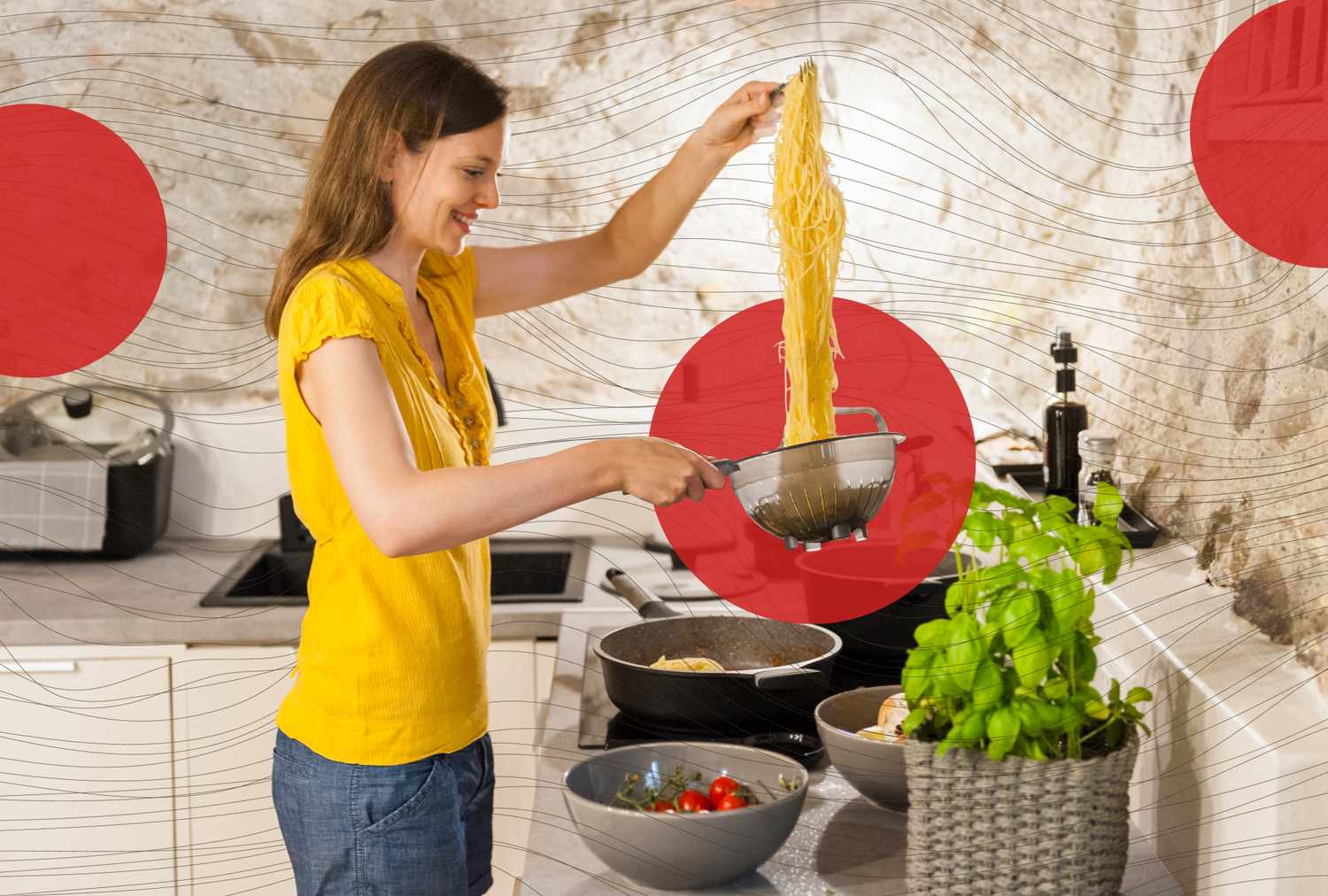Blog
Experts’ Top Anti-Inflammatory Ingredient to Add to Pasta

- Spinach offers fiber, antioxidants and nitrates—the perfect anti-inflammatory addition to your pasta.
- Spinach is convenient and versatile, and you can store it in the freezer to always have on hand.
- Other anti-inflammatory foods to add to pasta include garlic, olive oil, lentils and salmon.
Chronic inflammation is at the heart of many common health issues—diabetes, heart disease, cancer and Alzheimer’s disease—but certain foods may help stave off inflammation. Adding inflammation-fighting ingredients to your pasta doesn’t have to be complicated. In fact, one anti-inflammatory ingredient dietitians can get behind is spinach.
“Adding spinach to a pasta dish is a great way to sneak in veggies and reduce inflammation in the process,” says Alyssa Smolen, M.S., RDN, CDN. Spinach is full of antioxidants, fiber and nitrates that can help lower inflammation and promote heart health. Plus, it’s easy to toss into pretty much any pasta dish.
The Anti-Inflammatory Benefits of Spinach
Rich in Powerful Antioxidants
Antioxidants are some of the most important nutrients for lowering inflammation, and spinach is full of them. “This simple green helps reduce inflammation due to its strong antioxidant content, including vitamin C, lutein and zeaxanthin,” says Lisa Andrews, M.Ed., RD, LD. But that’s not all. “Spinach is also a great source of vitamin E, which can help reduce inflammation,” says Lindsay Livingston, RD. These antioxidants work by neutralizing harmful molecules called free radicals that can damage your cells, leading to issues like inflammation and chronic disease.
These antioxidants—vitamins C and E and the carotenoids lutein and zeaxanthin—are key to eye health. They help prevent macular degeneration—a common cause of vision loss in older adults. It’s primarily caused by oxidative stress and inflammation, so eating a diet rich in these antioxidants like can help combat this condition.
Adds Gut-Healthy Fiber
You may know that fiber helps keep you regular, but did you know it can help fight inflammation? Fiber promotes a healthy, diverse gut microbiome, which influences immune health and inflammation. And studies, both epidemiological and clinical trials, show that eating enough fiber can help prevent chronic inflammatory diseases like cardiovascular disease, digestive disorders and diabetes.
Just a half-cup of cooked spinach tossed into your pasta adds about 2 grams of fiber or 7% of the Daily Value. “Swap out white pasta for whole-wheat to make it even more fiber-rich,” recommends Smolen.
Source of Dietary Nitrates
Spinach is also rich in a compound called nitrates. Your body converts these nitrates into nitric oxide, which plays a big role in regulating inflammation. Some studies suggest that consuming more nitrate-rich foods like spinach and beets may reduce markers of inflammation in the body; however, more research is necessary to further explore this potential benefit. Research also shows that nitric oxide can help relax your blood vessels to lower blood pressure.
Another Benefit: Convenient and Versatile
The best part about spinach may be how convenient it is to add to pasta dishes. It’s widely available, versatile and not overpowering. Plus, it cooks quickly and easily, so it won’t add much time or effort to your meal prep.
“Adding spinach to pasta is a great option because it has a mild flavor and it wilts down when heated, so you can add a large amount without it being overwhelming,” says Livingston. You can add it to red pasta sauce to disguise it, or use an olive oil-and-garlic sauce to let the spinach shine through.
“I keep a bag of leaves in my fridge and rip up a handful for pasta as well as leftovers,” says Andrews. You can also keep a bag of frozen spinach in the freezer to always have on hand, without having to worry about it going bad.
Other Anti-Inflammatory Ingredients to Add to Your Pasta
- Mushrooms. “Mushrooms contain the naturally occurring antioxidant ergothioneine that may protect cells from damage,” says Patricia Kolesa, M.S., RDN. Studies show that higher intakes of this antioxidant (which is also found in some fermented foods) are linked with lower rates of chronic inflammatory diseases like heart disease.
- Garlic. Whether it’s in red sauce or mixed with olive oil, garlic is another worthwhile pasta addition. Not only does it add tons of flavor, “Garlic contains sulfur compounds like allicin, which have been shown to have powerful anti-inflammatory and immune-supporting properties,” says Ifeoma Charlley, RD, LD.
- Lentils. “Lentils are a nourishing plant protein that can boost the antioxidants and fiber in your pasta. Studies show lentils are rich in polyphenols, which are antioxidants that fight inflammation, and support diabetes management and heart health,” says Sheri Gaw, RDN, CDCES. You can mix lentils into red sauce for a vegetarian take on pasta Bolognese or buy pasta made of lentils.
- Olive oil. Olive oil is full of heart-healthy fats and antioxidants that can help lower inflammation. Research shows that a diet rich in olive oil can lower levels of inflammatory markers in the body. You can use it in place of red sauce to coat your pasta. Throw in a little garlic for added flavor and anti-inflammatory benefits!
- Salmon. For satiating protein, pair your pasta with salmon. Not only will you get high-quality protein, you’ll also get a healthy dose of omega-3 fatty acids to help lower inflammation.
Pasta and Spinach Recipes to Try
Our Expert Take
To turn a plain pasta dinner into an inflammation-fighting meal, add spinach! This leafy green is full of antioxidants, fiber and nitrates that can help keep inflammation at bay. Plus, it cooks quickly and isn’t overpowering, making it easy to add to most pasta dishes.
For even more benefits, add ingredients like olive oil, garlic, mushrooms, lentils and salmon to your pasta. You’ll get a plethora of unique antioxidants and plant compounds that help prevent cell damage and resulting inflammation.












